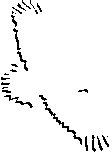When a web browser displays a page such as the one you are reading now, it reads from a plain text file, and looks for special codes or "tags" that are marked by the < and > signs. The general format for a HTML tag is:
<tag>text goes here</tag>
For example, the title for this section uses a header tag:
<h3>The Key to HTML Tags</h3>
This tag tells a web browser to display the text The Key to HTML Tags in the size of header level 3. HTML tags may tell a web browser to make the text bold, to italicize it, to make it into a header, or even to make it be a hypertext link to another web page. It is important to note that the ending tag,
</tag>
always contains the "/" slash character. This "/" slash tells a web browser to stop to what the tag asked it to do the text. Although many HTML tags are stand alone units many others are paired, with beginning and end tags. The beginning tag is called the open tag and the end tag is called the close tag. If you forget the slash, a web browser will continue the tag for the rest of the text in your document. For example of you don't want your entire document to be italics, don't forget the ending tag with the "/" slash character.
NOTE: A web browser reacts the same way if you use upper or lower case for coding your tags. For example, <h3>example text header</h3> will be read by a browser the same way as <H3>example text header</H3>

If you make a typographical error in the HTML for your web page then it will look, well... pretty bad. Don't worry, after you have checked your page in your browser and see a problem it is very quick and easy to open your text editor up and edit the HTML and make the changes needed, so those mistakes that can make your web page look bad can be readily fixed.
If you wish for some of your text to show up as italics, you must use the open and close tags of <i> and </i>. If you make a mistake and type for example, a backslash instead of a slash, as in <\i> or some other varient, the browser program won't understand and will simply ignore the close tag, and the attributes of the open tag will continue past the point where you meant for it to stop. In other words, the rest of your entire document will be in italics. The tags for text showing up as bold are <b>bold</b>.
An HTML document contains two distinct parts, the head and the body. The head contains information about the document that will not displayed on the screen. The body contains everything else that is acutally displayed as part of the web page.
The most basic of all tags is : <html>, which indicates that the information about to follow is written in HTML. The <html> tag is a paired tag. Every web page starts with the tag, <html> and ends with the </html>. ( Note the "/" which tells the broswer that the tag has ended.)
you must always enclose all HTML work within the <html>...</html> tags. Within the <html>...</html> is first your <head>...</head> and then the <body>...</body>.
Here are the steps for creating your first HTML document:
<html> <head> <title>My Home Page</title> </head> <body>I am creating my first, very own home page. This portion of my page will be in <i>italics</a> and this part will show up as<b>bold text</b>. </body> </html>
NOTE: Look where the <title>...</title> tag is located. It is in the <head>...</head> portion and thus will not be visible on the screen. What does it do? The <title> tag is used to uniquely identify each document and is also displayed in the title bar of the browser window. The text within the <title>...</title> tag is NOT displayed on the web page; you will see it in the titlebar of the web browser window. One of the subtle things that you can to to make your Web page effective is to give it a good title with in the <title>...</title> tags. The title not only shows up in browser windows but it is also used as the link information when a user saves a Web document into their bookmarks, favorites, or hotlist. The words that appear in a Web page's title are also used in searches by many Internet search engines. If it is important that viewers are able to find your Web page via keyword searches, make sure that the title includes words your viewers are most likely to use when doing a keyword search.
By using this file name extension html, a web browser will know to read these text files as HTML documents and will properly display the web page.

Think of a topic for another web page. Then, create your own HTML text file that includes a <title> tag just as you did above. Try the <i>italics </i> tags, the <center>this text will be centered</center> tags, and the <b>bold</b>tags. Remember that when you save the page, you must give it a name with the ".html" file extention. Once you have saved the HTML file, close it in your text editor and then open it in your web browser. If it doesn't look like you expected it to, go back to your text editor to figure out what the problem is.
